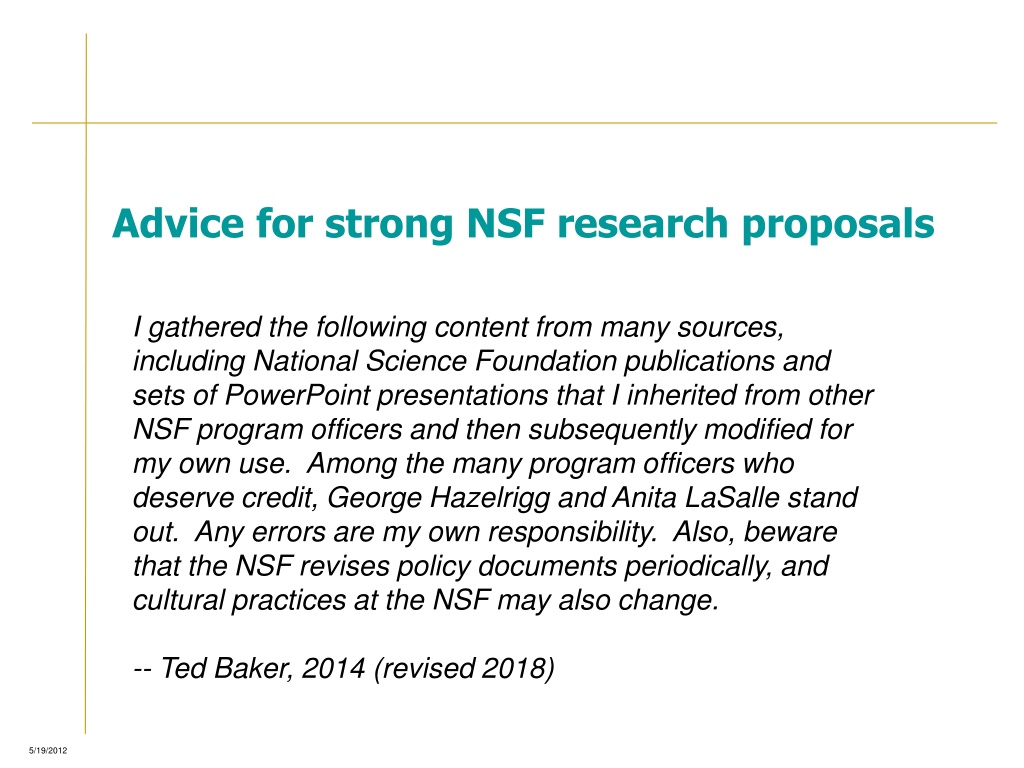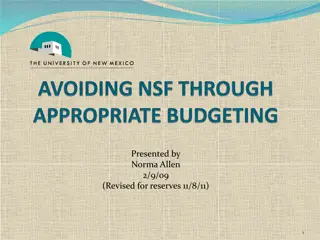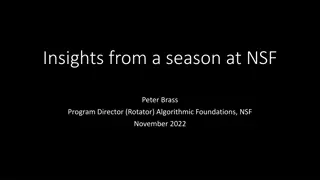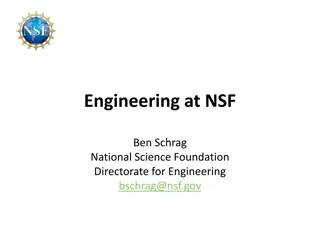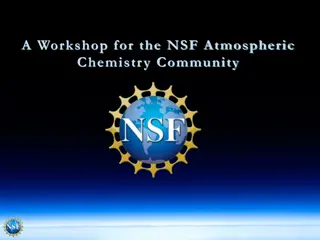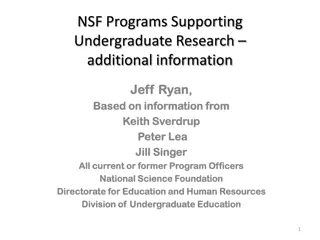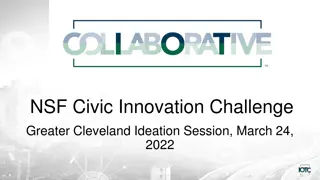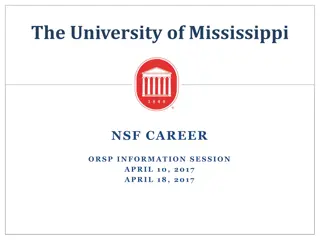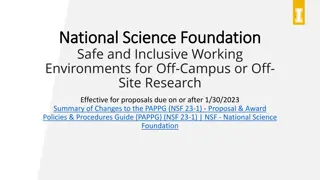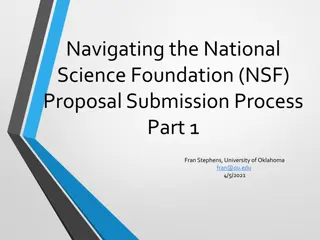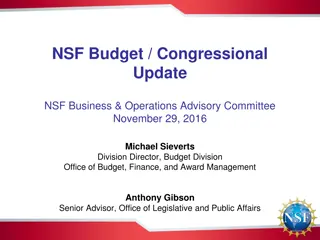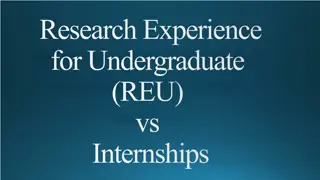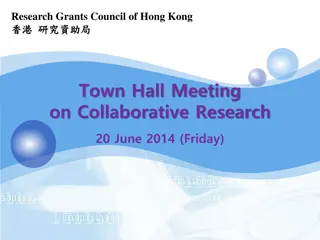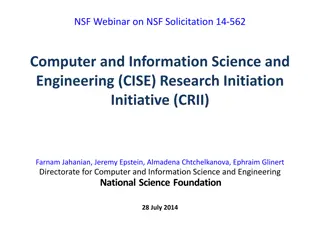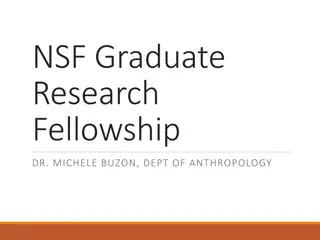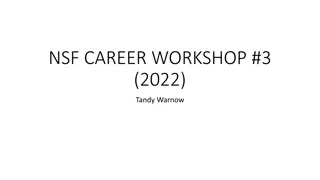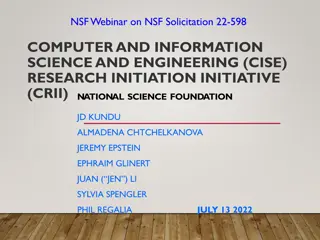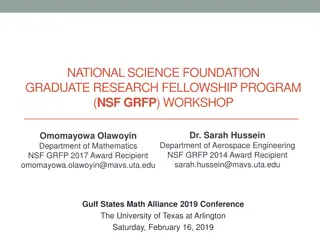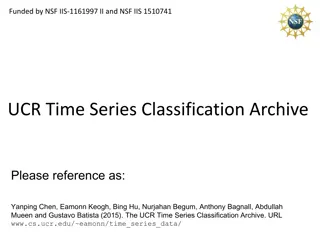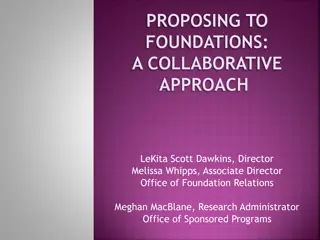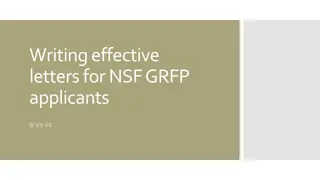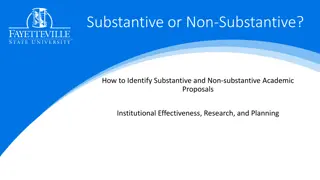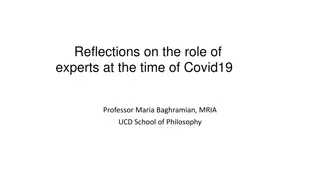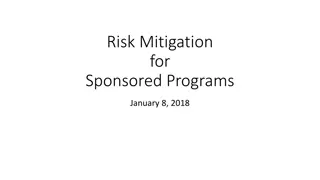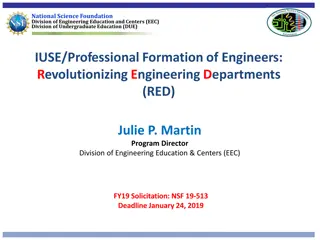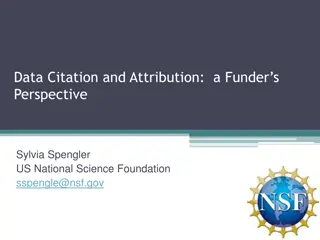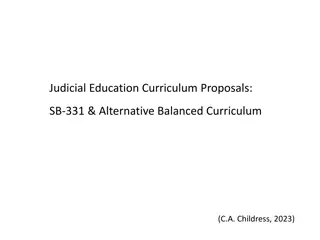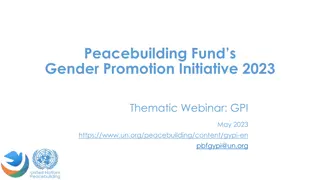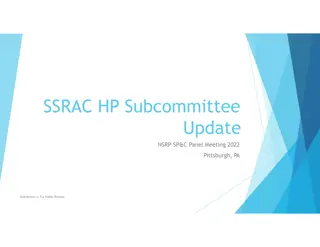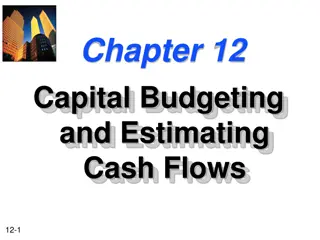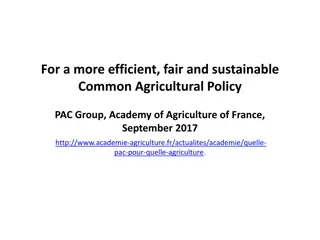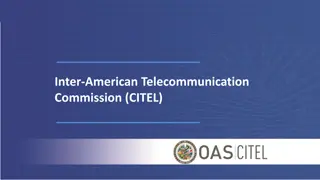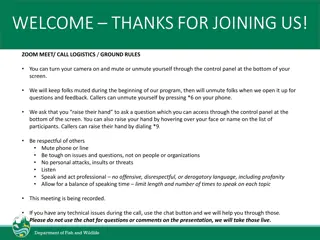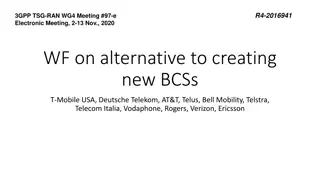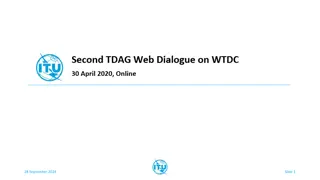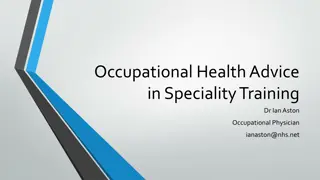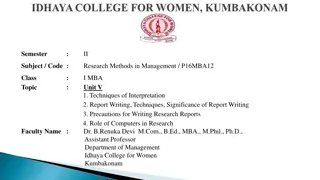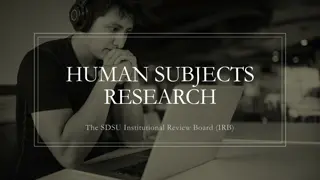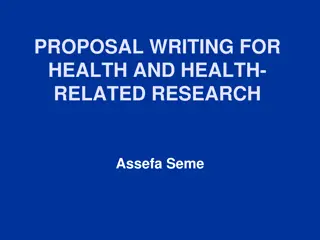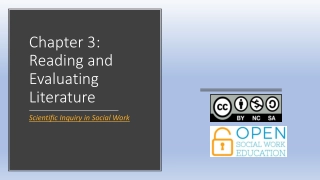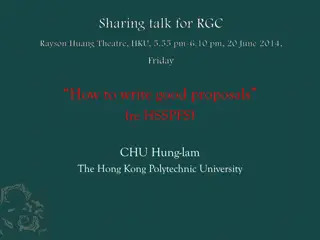Expert Advice for Building Strong NSF Research Proposals
Gain valuable insights from experienced NSF program officers George Hazelrigg and Anita LaSalle on writing successful research proposals. Learn key strategies, avoid common mistakes, and understand the NSF review process to increase your chances of securing funding for your research projects.
Download Presentation

Please find below an Image/Link to download the presentation.
The content on the website is provided AS IS for your information and personal use only. It may not be sold, licensed, or shared on other websites without obtaining consent from the author. Download presentation by click this link. If you encounter any issues during the download, it is possible that the publisher has removed the file from their server.
E N D
Presentation Transcript
Advice for strong NSF research proposals I gathered the following content from many sources, including National Science Foundation publications and sets of PowerPoint presentations that I inherited from other NSF program officers and then subsequently modified for my own use. Among the many program officers who deserve credit, George Hazelrigg and Anita LaSalle stand out. Any errors are my own responsibility. Also, beware that the NSF revises policy documents periodically, and cultural practices at the NSF may also change. -- Ted Baker, 2014 (revised 2018) 5/19/2012
Outline 1. Advice from the two Georges 2. How to write a strong proposal 3. Managing random factors in the the review process 4. Frequent mistakes in proposals 5. So, your proposal was rejected. What now? 6. How & when to contact a program officer 7. Hurray! But remember if you are funded ... 8. The NSF review process, in more detail 9. The NSF review criteria, and the PAPPG 10. Special considerations for the CAREER program 11. The CPS Program
Classic concise advice on proposal writing from THE TWO GEORGES
George Heilmeiers Catechism What are you trying to do? Articulate your objectives using absolutely no jargon. How is it done today, and what are the limits of current practice? What's new in your approach and why do you think it will be successful? Who cares? If you're successful, what difference will it make? What are the risks and the payoffs? How much will it cost? How long will it take? What are the midterm and final "exams" to check for success? 1. 2. 3. 4. 5. 6. 7. 8. 9. The proposal should provide clear answers to all of these. Read more about George Heilmeier at https://en.wikipedia.org/wiki/George_H._Heilmeier
George Hazelriggs 12 Steps Know yourself Know the program from which you seek support Read the program announcement Formulate an appropriate research objective Develop a viable research plan State your research objective clearly in your proposal Frame your project around the work of others Grammar and spelling count Format & brevity are important 10. Know the review process 11. Proof read your proposal before it is sent 12. Submit your proposal on time 1. 2. 3. 4. 5. 6. 7. 8. 9. See full text at www.cs.rpi.edu/~trink/HazelriggWinningResearchProposal.pdf
HOW TO WRITE A STRONG GRANT PROPOSAL
Its simple 1. Start with an innovative idea 2. Present it in a clear, convincing way What is the project about? (the research objective) How will you do it? (the technical approach) Can you do it? (you and your facilities) Is it worth doing? (intellectual merit and broader impact) Remember that you are telling a story. Make it interesting!
What is an innovative idea? Something the reviewers have not seen before Ideally, with transformative potential ideas, discoveries, or tools that radically change our understanding of an important existing concept or lead to a new paradigm and broad impact the potential to benefit society Not: An incremental advance in a well-studied area A routine variation or recombination of old ideas Today s hot topic, or a combination of buzz-words
Match your idea to the right program Read the solicitation carefully, with insight. Can you make a convincing case that your idea fits this program? If not, look for a different program. Beware the nearest submission deadline approach! Don t waste a good idea, your time, and that of reviewers, by submitting it to a program that does not fit. If in doubt, seek guidance from program officers* *See slides on how and when to contact program officers, below.
Pitch it well Understand the review process. Write to make the reviewer s job easy Get experience serving on panels for the program, if possible Use title and project summary to direct your proposal to the right panel and reviewers Answer all the Heilmeier catechism questions Read the solicitation again, and heed it Identify and address all program specific goals and requirements explicitly Formulate an engaging story!
Read & heed the solicitation What is the scope of research of interest for the program? Distinguish program goals from examples and broad motivation Are there program-specific format and content requirements for the proposal? Identify strong requirements (e.g., must ) and expectations (e.g., all proposals are expected to ... ) Are there program-specific evaluation criteria? Find the section on solicitation-specific review criteria, hidden in the boilerplate near the end of the solicitation
Example: The goal of the CPS program is to develop the core system science needed to engineer complex cyber- physical systems upon which people can depend with high confidence. . the CPS program seeks to reveal cross-cutting fundamental scientific and engineering principles that underpin the integration of cyber and physical elements across all application sectors. Pitfall: Ignoring critical words Pitfall: Misinterpreting ambiguous phrases. The text above says the research results should be broadly applicable, not specific to any application sector.
Write a strong summary Start with a statement of your proposed objectives Do not begin with a weather report: The sky is falling. Tools are breaking. Designs are failing Do not begin with a state-of-the-union address: It is imperative that the nation develop a strong manufacturing base This not a technical paper, or a murder mystery (where we find out what the objective is on page 15) The Intellectual Merit and Broader Impact statements are important
How to structure the summary First block The research objective of this proposal is The approach is Second & third blocks Intellectual Merit Broader Impact Avoid buzzwords and self-praising adjectives like transformative , innovative , novel , etc.
What the NSF wants to know What are your research and educational objectives? This is what directs your proposal to the appropriate program and panel What is your approach? Sketch it out, in just a few sentences What is the specific research contribution you will make to the knowledge base (the intellectual merit)? If successful, what will be the benefit to society (the broader impact)? Along with the title, program officers will rely heavily on the Project Summary to decide what areas of expertise are needed to review your proposal, and how to bin it with other proposals for a panel.
Example Summary* My research goal is In pursuit of this goal, the research objective of this proposal is to test the hypothesis that the propensity of a tree to break is directly proportional to how many monkeys are in the tree. The approach will be to take a sample of ten trees and load them with monkeys until they break Merit It is important that we know how many monkeys can Intellectual Intellectual Merit climb a tree before it breaks because this affects our perceptions of monkey procreation and The Snerd Theory holds that tree size limits monkey procreation. This study challenges that theory with the notion that If the objective hypothesis is correct therefore, it will transform our approach to Broader Impact Broader Impact Monkeys are used in medical research. By knowing how many monkeys can fit in a tree, we will be able to provide more monkeys for such research thereby advancing medical science more quickly and improving the quality of life. Also, by watching the monkeys get hurt when the tree breaks, graduate students will be less likely to climb trees, thereby increasing their probability of graduating. *From George Hazelrigg.
The next 15 pages Back up your summary with details Start with a restatement of your goals and objectives, clarify them, and provide a plan to accomplish them Tasks should correspond to objectives, one-to-one Each task description describes what is needed to accomplish one objective Restate and provide detail on your intellectual merit and broader impacts, with separate headings
Apply the Goldilocks Principle Not too much review of prior work, but enough to show you are not at risk of duplicating work already done, and are informed of relevant foundations. Not so much preliminary results that the proposal seems incremental, but enough to show the problem is interesting and your approach is plausible. Not too much detail on your approach, but enough to convince reviewers that you have a chance at success.
Intellectual Merit What is already known? What is new? What will your research add? Why is your research important for the advancement of your field? What will this do to enhance or enable research other fields?
Make a case for novelty If there is novelty in the research problem, why is solving it important? If there is novelty in your approach, why is success plausible? If there is novelty in the application or artifact you will develop, how is what you propose more than development? What are the challenges?
Target the Type of Review Review processes vary across divisions and programs May use panels, ad hoc letter reviews, or a combination Ad hoc reviewers More likely to be experts in your specific area But quality of review, and consistency across reviewers can be a problem Panelists Less likely to understand details of your research More likely to develop a consensus opinion Contract program officers to find out how they review proposals for the program you are targeting
Broader Impacts Why should the general public care? Consider: Economic/environment/energy Education and training Providing opportunities for underrepresented groups Improving research and education infrastructure
Broader Impacts How is the project likely to benefit society or advance desired societal outcomes For most projects, there are specific potential impacts of the research on the economy, society, human well- being, defense, etc. Do not be limited to educational and student outreach activities. Plans for transition to practice and dissemination to industry are important If you propose an activity, describe it as actionable; identify resources, and include impact assessment PIs are expected to be accountable for carrying out the activities described in the funded project.
Broader Impact The Broader Impact focuses on the benefit to society at large as a result of your research result Means to benefit society include: Direct benefits of the new knowledge or technology, e.g. to the economy, quality of human life* Education and training Providing opportunities for underrepresented groups Improving research and education infrastructure *The key issue is how your research results will be applied. Why would the general public care?
Education & Outreach Undergraduate Curriculum Projects (REUs) Graduate Curriculum Conferences Involvement with industry, national labs Networks, partnerships K-12 outreach (RETs) Museum projects Consider all, but don t propose a laundry list, that claims you will do everything.
Results of Prior Grants & Current Support You are required to say something, to show you have used prior NSF grants well But that is not all If you have any prior grants (NSF or other) that have similar looking titles, in your list of current support, differentiate between them in enough detail that reviewers to not suspect overlap or duplication
MANAGING RANDOM FACTORS
Its a random process! You can t guarantee success But you can shift the odds in your favor by writing a strong proposal Fallacy: If a proposal has a funding rate of 10%, I need to submit 10 proposals to succeed. Truths: Most of the 90% that are not funded are weak in ways that you can avoid A strong proposal may shift the odds to 50% or better So, don t waste your time and that of the reviewers. One great proposal has a better chance than 10 weak ones.
Random Factors in Review Who are the reviewers, and what is their expertise? What other proposals will the review panel (if any), and later the NSF staff, compare it against? Who are the NSF staff making the decision? You cannot control these things, but you can can improve your odds of a favorable outcome.
Reviewer Effects One strongly negative reviewer can kill a proposal, and least one enthusiastic one is needed to make it rise to the top. Experts tend to be more critical of details, more demanding of originality, but also more appreciative of a truly excellent proposal and more effective in advocating for it. Sometimes, less expert reviewers will fall in love with a proposal because they have not seen the idea before, but it is unwise to base a strategy on this effect. So, how to improve your chances of getting expert reviewers?
Getting Good Panel Reviewers Proposals are typically binned , if reviewed by panel, based first on title, and then on the project summary. Each panel ends up being dominated by some theme or aspect that is common to most of the proposals. Program Directors, and then panelists, are assigned based on this theme. Take care that the title and the Intellectual Merit portion of your project summary convey where the primary research contribution lies, and thereby implicitly identify the peer group that you feel should be evaluating your proposal.
Panel Comparison Effects A proposal that is similar to others on the same panel is more likely to have experts on the panel who are qualified to review it. However, it must then stand out above those other proposals. An outlier may succeed by standing out, or fail dramatically if the panelists don t appreciate it. See advice above on influencing binning.
NSF Staff Effects Staff choose reviewers, may direct panel discussion, and have a strong influence on final decision. A program officer may reverse a panel ranking if a case can be made that the panel got it wrong. Before you submit a proposal, contact program officers* to verify program fit, and get their reactions to your idea. You may decide to tailor the proposal, or submit to a different program, based on this information. Never try to lobby for a proposal that has been submitted already, or to reverse a decision a proposal that has been recommended to be declined. *See slides on how and when to contact program officers, below.
Research Topic Mistakes A man with a hammer looking for a nail A proposal that tries to push a technology, without a compelling application for motivation. e.g., Have robot, need work. A list of unconnected problems Or whose only connection is your hammer Following a herd Jumping on a hot topic Imitating previously funded projects Boring Predictable, incremental work No clear potential for big impact
Strategic Mistakes Not heeding the solicitation Re-using a proposal originally submitted to another program, without a complete rewrite Re-submitting a proposal to the same program, without addressing the reviewer comments Cutting and pasting from your research paper(s) Resting on your laurels: Proposal is mostly about your prior work: I ve done good work before, so give me more money to continue this work. Describing a problem without a plausible path to a solution
Team/Collaboration Mistakes Teaming with a collaborator from another discipline who is weak in that discipline (but you don t know it) Pasting together contributions from multiple PI s, without integration omnibus syndrome Including personnel/collaborators whose role in the research is not clear
Writing Mistakes Long-winded explanations Too many superfluous details Poor organization of thoughts into words Goals or claims in the project summary that are not borne out by the research plan Writing a defensive proposal in response to reviewer comments on a prior submission. Cramming too many ideas into one proposal
Prior Work Mistakes Poor distinction between preliminary results and proposed work e.g., interleaving your descriptions of prior work and new work you propose to do in a way that the distinction is not clear Assuming that the reviewers are experts in your research area, and have read or will read the papers that you cite Citing only/mostly your own prior work. Failure to explain relationship to any grants listed under Current Support that have apparently similar titles.
Lack of Cohesion A bunch of separate pieces stapled together A laundry list of tasks, with no prioritization or structure Nails only united by your hammer
Research Plan Mistakes Dependence on a risky initial task, with no back-up plan if that fails No plan for assessment of success, no metrics
Broader Impacts Mistakes Ignoring direct societal and economic impacts i.e., limiting discussion to education & outreach Implausibly long laundry list of activities Where will the PI get the time to do all these things? Activities you could do without the grant not in the budget not dependent on the project research Activities that depend on resources not supported by collaboration letter e.g., K-12 outreach without school agreement
Education/Outreach Mistakes Routine, lackluster Re-using text from a prior funded proposal, especially if you have not delivered on those promises Vague, non-actionable promises Failure to address assessment of these activities
Budget Mistakes Padding budget to reach the maximum allowed Subcontracts/sub-awards without detailed explanation of the work to be done and why a sub- award is the right way to accomplish it Lumps of money in Other without explanation and justification Asking for more than 2 months of salary for senior personnel, over all NSF grants, without a strong justification
Presentation Mistakes Font too small Figures illegible Figures without explanatory text Jargon, acronyms, abbreviations Long lists of citations [1,2,3,4,5,6,7,8] without discussion Disparaging competitors Failure to organize in a way that makes it easy for reviewers to find elements required by the solicitation, and other important questions (see Heilmeier catechism)
Ethical Mistakes Plagiarism Asking for more than one grant to do the same work Asking for money to do work you have already done, especially if you expect to submit a paper to a conference for review before the proposal has been reviewed Since money is involved, these can constitute fraud against the Federal government, which may be prosecuted as a felony. If your grad student writes your proposal, you are responsible for the content, and in trouble if there is a breach of ethics.
So, your proposal was rejected. What now? REJECTED PROPOSALS
Interpreting Reviews Understand how reviewers work, and read between the lines. Most read a proposal, form an opinion, and then support that opinion with specific comments. They may stop writing when they feel they have justified their position, or get hung up on details. Some have difficulty writing in English, or may just be lazy about writing comments They may never mention some serious problems, or fail to distinguish minor ones from serious ones. They will tend to react to what is in the proposal, and tend not to comment less on what is missing from it. This is especially true for proposals that are not a good fit to the solicitation.
Dont be afraid to ask for information Contact a program officer* who sat on the panel, and see if they will help you additional information How to interpret vague reviewer or panel comments Which reviewer comments are most important, especially if they are contradictory Some PD s are more communicative than others, but it is worth asking Most are willing to give you more information in a phone call than in writing (e-mail) Focus on whether the idea is worth resubmitting, and how to make your next submission better *See slides on how and when to contact program officers.
But dont cross the lines You can t get the NSF to fund change the decision to decline a proposal by rebutting the reviews* or asking the program officer for mercy. And don t ask the program officer to fund your declined proposal as an EAGER grant *Yes, there is a formal reconsideration process, but you would be unwise to use it. As the NSF says: Because factors such as program budget and priorities factor into the decision on a proposal, NSF cannot ensure proposers that reconsideration will result in an award even if error is established in connection with the initial review. Moreover, while you are waiting for the reconsideration process to complete, you will probably miss the window for the resubmission to the program.
